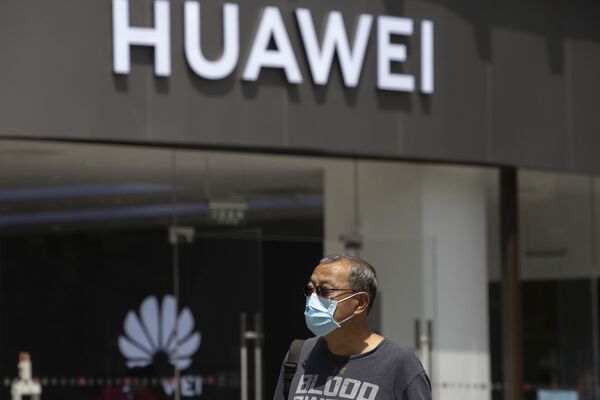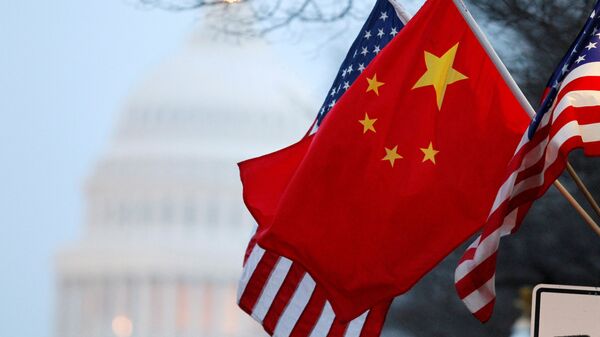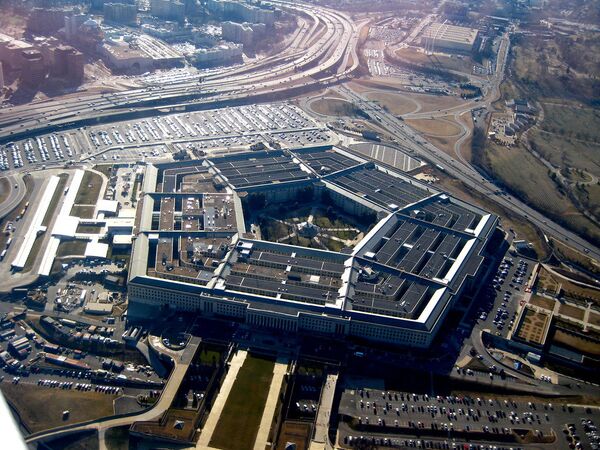China remains the US’s largest trading partner, despite the trade war unleashed by President Donald Trump and apart from his repeated calls to scale down America’s dependence on imports.
In 2018, the trade in goods between the two countries was estimated to be worth $659.8 billion, $539.5 billion of which accounted for Beijing’s exports to the US. The same year, the US started to introduce tariffs on Chinese products, including satellites, aircraft parts, weapons and medical devices, amid efforts to pressure its Asian partner to conclude a new trade deal, which according to Trump administration will be more favourable to Washington.
However, there are some areas in which the United States is still too dependent on its economic frenemy and simply cannot walk away from without significantly hurting its domestic market and a number of critical industries.
Military
A 2018 review by the Pentagon, ordered by President Donald Trump, concluded that the American military largely depends on foreign countries for some crucial materials, with China being among the countries that largely supply the United States with sensitive tech, including the micro-electronics used in satellites and drones.
The Pentagon has long warned of the dangers of so-called “kill switches” in transistors coming from China that could allegedly disable systems in American aircraft and other vehicles during a potential conflict. In 2019, the US Department of Defense issued a ban on the purchase and use of commercial “off-the-shelf-drones”, including ones from China-based Da Jiang Innovations (DJI), citing “cybersecurity vulnerabilities”.
Despite these warnings, the trade balance between the two states indicated that America still buys a large portion of its electronic and machinery-related equipment from China, some of which can still be used in critical areas, including military.
China is also a leading supplier of 80% of the rare earth minerals to the US market, components that can be used in some crucial industries relating to the build-up of weapons systems. These rare minerals are particularly used for magnets and radars, with China remaining the indisputable global leader in their production.
Telecommunications
China’s tech giant Huawei still remains the world’s largest producer of 5G superfast technology, with American companies visibly falling behind when it comes to the development of domestic 5G equipment.
Despite the absence of cheaper or same-level-effective alternative, the Trump administration began a campaign against Chinese tech giant Huawei last year, citing potential concerns over its alleged espionage activities on behalf of Beijing – claims that have long-been disputed by the company and the Chinese government.

As parts of its efforts to relocate a global chip manufacturing supply chain to the United States, Washington struck a deal with the Taiwan Semiconductor Manufacturing Company (T.S.M.C) that produces tech for a large number of smartphones. In May, T.S.M.C announced that it will now start building a factory in Arizona.
Pharmaceutical Industry
The coronavirus pandemic also highlighted the US's acute dependence on Chinese meds. With its leading position in mining and production of key chemicals and minerals, China supplies 97% of the antibiotics consumed in the US.
According to reports conducted in May, 95% of ibuprofen and 91% of hydrocortisone supplied to the United States are also produced in China. Around half of the world’s face masks are also made by Beijing.

US Debt Funding
One of the most crucial areas of American’s dependence on China is related to US budget deficits. China is one of the largest holders of US Treasury securities, owned directly or through quasi-government bonds. According to December 2019 estimates, Beijing owned 5%, of the $23-trillion American national debt, or $1.07 trillion.
With the Chinese economy being export-driven and defined by a trade surplus with the US, this situation suits the Chinese economy. However, if China decides to dumps its US holdings then this could significantly hurt, if not crush, parts of the American - and indeed global - economy.
In April 2020, the US national debt reached a record $24.22 trillion.






